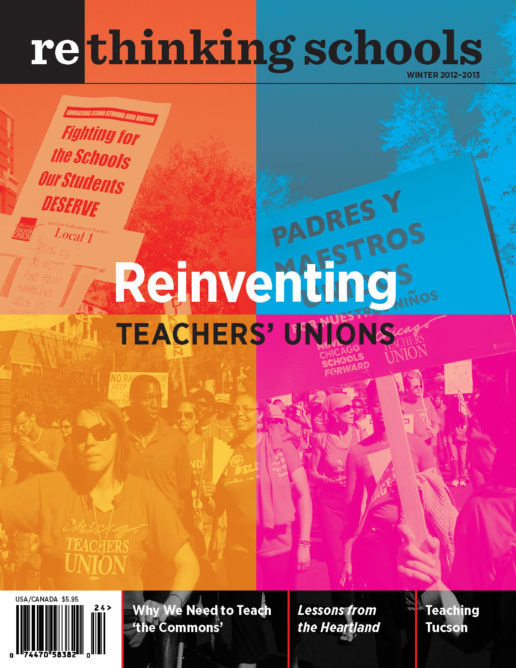Preview of Article:
Stealing and Selling Nature
Why we need to teach environmental history
Illustrator: David McLimans
In the wake of superstorm Sandy and a presidential election in which the candidates from both major parties essentially ignored climate change, it’s time that our schools begin to play their part in creating climate literate citizens. Hurricane Sandy, and the superstorms that will certainly follow, are not just acts of nature—they are products of a massive theft of the atmospheric commons shared by all life on the planet. Every dollar of profit made by fossil fuel companies relies on polluting our shared atmosphere with harmful greenhouse gases—stealing what belongs to us all. But if we don’t teach students the history of the commons, they’ll have a hard time recognizing what—and who—is responsible for today’s climate crisis.
Most U.S. and world history textbooks teach students to ignore the role of nature in history. But as environmental crises—climate, water, soil, and biodiversity—threaten the viability of life as we know it for future generations, we can no longer afford a no-nature social studies curriculum. Our students need to know the environmental history of our current crises, including how nature was turned into a commodity to be bought and sold, and used for private profit. They need to recognize that today’s “enclosure of the commons” has a long history.

